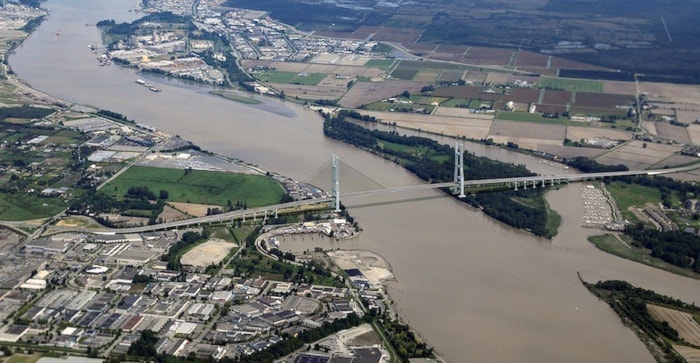Metro Vancouver staff are warning the province's plan to replace the Massey Tunnel with a large new bridge could run counter to regional land-use goals.
A report coming to Metro's transportation committee Wednesday from senior regional planner Ray Kan cautions that a big new bridge may "unleash pent-up demand" and spur more people to drive on the Highway 99 corridor, or prompt transit riders and car pool users to instead drive alone.
"Unfettered access could easily result in a congested facility," his report said. "Further, an expanded facility may simply move the 'bottleneck' further downstream or upstream."
The report says more information is needed and much of the potential impact on regional growth may depend on whether the new bridge is tolled or not.
Provincial officials have so far avoided talk of tolls on the promised bridge, and have said they don't expect to estimate the effect of tolls on projected traffic flows until next spring.
There is no detailed business case yet out for the project and the number of bridge lanes isn't finalized.
The head of the province's Gateway program last month said traffic patterns have changed since Victoria last considered and rejected a replacement of the tunnel.
The Metro report says the premier's Sept. 20 announcement of a new bridge was "unexpected" due to the absence of more technical analysis and since "only limited information" has been provided by the province on the proposal.
"It is unclear what basic demographic assumptions the ministry has been using to justify the proposed capacity on the bridge," Kan's report said, adding it's also unclear what assumptions are built in on the potential expansion of port terminals at Roberts Bank and Fraser Surrey Docks.
The bridge announcement throws a wrench into a number of planning initiatives.
Metro's regional growth strategy didn't anticipate a possible shift in growth pressure that might come from replacing the tunnel with a much larger bridge, he said.
Kan also said the uncertainty around the new bridge casts doubt on the validity of technical work being carried out by TransLink for its new regional transportation strategy, a regional goods movement strategy that has been in the works for several months, as well as the ongoing Pattullo Bridge replacement review.
A new bridge would meet modern seismic and lane width standards and provide direct access for cyclists and pedestrians, the report said, as well as bettter lane allocations for trucks and high-occupancy vehicles.
But care would have to be taken to ensure it doesn't undermine regional goals to contain growth, control air pollution and reduce greenhouse gas emissions.
Buses make up just one per cent of vehicles going through the tunnel, but carry 26 per cent of the people, thanks to dedicated lanes and queue-jumper ramps that speed buses past traffic jams on Highway 99.
Several Metro Vancouver mayors have already been critical of the bridge plan, voicing concerns that the cost of up to $3 billion could push back their top priority – transit improvements.
Some suggest the bridge also be subjected to a referendum, if the province insists on one to approve funding sources for transit expansion.
